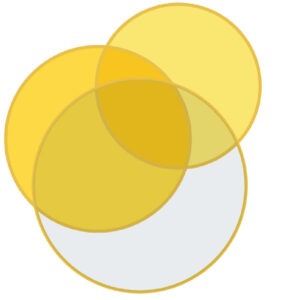September 9, 2015; SB Nation
An amazing piece of investigative reporting by Thomas Hauser reveals problems in yet another nonprofit sports association—this time, the United States Anti-Doping Agency (USADA). This 501(c)(3)’s Form 990 describes its mission as “preserving the well-being of Olympic support, the integrity of competition, and ensuring the health of athletes.” Hauser’s article reveals that the USADA had an unusual role in the May 2nd bout between Floyd Mayweather and Manny Pacquiao that didn’t quite exude integrity.
The USADA had been contracted to oversee drug testing for the fight, including conducting unannounced drug tests of the fighters. At Mayweather’s home, USADA staff discovered that Mayweather had had a huge intravenous injection of drugs. Although the drugs that were taken by Mayweather were not themselves illegal, the rules generally prohibit IV injections like Mayweather’s before prizefights. The reason? Injections like Mayweather’s can potentially “mask the presence of another substance that is already in the recipient’s system or might be added to it in the near future.” The “substance” that is of concern throughout sports, including boxing, is steroids or other performance enhancing drugs (PEDs).
Hauser notes that the USADA website says that the organization aims to “protect the rights of clean athletes….We hold ourselves to the same high standards exhibited by athletes who fully embrace true sport.” Apparently, to uphold those standards, the USADA received an up-front payment of $150,000 to handle drug testing for the Mayweather-Pacquiao fight. Somehow, that led to the USADA approving—or at least not rejecting—Mayweather’s IV drug taking (and the USADA conducting its tests of Mayweather at his house rather than at a medical facility). At the same time, a request from the Pacquiao camp for an injection of Toradol to ease pain due to a torn rotator cuff was rejected by the Nevada State Athletic Commission.
Apparently, the $150,000 to the USADA is substantially more, perhaps 10 times more, than other nonprofit testing organizations would usually charge for its role in testing fighters for PEDs, and Hauser reports that it uses a test that is inferior to others (including the more thorough tests administered by the USADA’s competition, the Voluntary Anti-Doping Agency)—although substantially less costly to administer. The payment to the USADA came from Al Haymon, a longtime boxing impresario who represents and advises Mayweather. There was no comparable payment from Pacquiao’s camp. After the news of the intravenous use of drugs by Mayweather became known several weeks after the event, the USADA retroactively gave it the stamp of approval. It had not revealed the occurrence of the Mayweather injection to Pacquiao’s people. Moreover, although the USADA apparently declared Mayweather clean of PEDs, it has not released the detailed information about its tests.
Sign up for our free newsletters
Subscribe to NPQ's newsletters to have our top stories delivered directly to your inbox.
By signing up, you agree to our privacy policy and terms of use, and to receive messages from NPQ and our partners.
Hauser concludes, “There’s an open issue as to whether USADA has become an instrument of accommodation. For an agency that tests United States Olympic athletes and receives $10 million a year from the federal government, that’s a significant issue.” The issue isn’t just the Mayweather-Pacquiao fight. Hauser documents the USADA’s involvement in several bouts where it declared fighters clean who were subsequently shown to have been somewhat less than fully pristine in terms of PEDs, but they had escaped due to the USADA’s testing regime. Several controversial—and more expensive—USADA contracts seem to involve fights and fighters advised by Haymon.
A payment for $150,000 isn’t going to make or break the USADA, with its $14.3 million budget (according to its 2013 Form 990). But government support, at least per its 990s, has been declining in recent years, down from the $10 million annually that Hauser reported to $8.6 million in 2013. Program service revenue as a proportion of the USADA’s total revenues has been increasing, rising to 38.5 percent in 2013 from just over 35 percent in 2012. Its program service revenue from drug testing, which the Mayweather tests would have included, rose from $1.4 million in 2012 to $1.8 million in 2013. (Its other program service revenue is from a contract with the U.S. Olympic Committee.)
Hauser’s investigative reporting is impressively detailed. Boxing Insider’s Ivan Goldman says that the USADA’s response to the Hauser article was that Hauser basically doesn’t know what he’s talking about, but didn’t pinpoint inaccuracies in Hauser’s facts or analysis. Moreover, the USADA’s relationship with Haymon and Mayweather (whose self-selected nickname is “Money”) raises questions about its impartiality as a governing sports body. In light of plenty of other sports-regulating bodies encountering suspicions about their probity—think about the FIFA’s oversight of the World Cup or the NFL’s repeated mishandling of issues such as PEDs, domestic violence, and, most recently, deflated pigskins in championship games—questions about the USADA’s behavior are important to resolve, especially since this organization receives an annual seven-figure grant from the U.S. government.
Equally important, however, is the impact of questions about the USADA on the nonprofit sector. Goldman jumps from the Mayweather-Pacquiao blood and urine testing to the USADA’s status as a nonprofit: “USADA is a nonprofit entity, which means it pays no federal income tax. However, that doesn’t mean it works for free. Nonprofit status doesn’t prevent an organization from paying its executives generous salaries and expenses and granting other nice perks.” (According to the 2013 990, USADA CEO Travis Tygart received $349,318 in reportable compensation plus another $40,471 in other compensation from the USADA or related organizations.)
Boxing has never had the most pristine of oversight and accountability reputations over the years. If Hauser’s report is on target, the USADA has a problem to deal with, and Congress and the nonprofit sector have a role in cleaning it up, else the tarnish of questionable PED testing in the Mayweather-Pacquiao instance (and others that Hauser documents) spreads to the USOC and more broadly to the structure of nonprofits that oversee and regulate professional sports.—Rick Cohen













